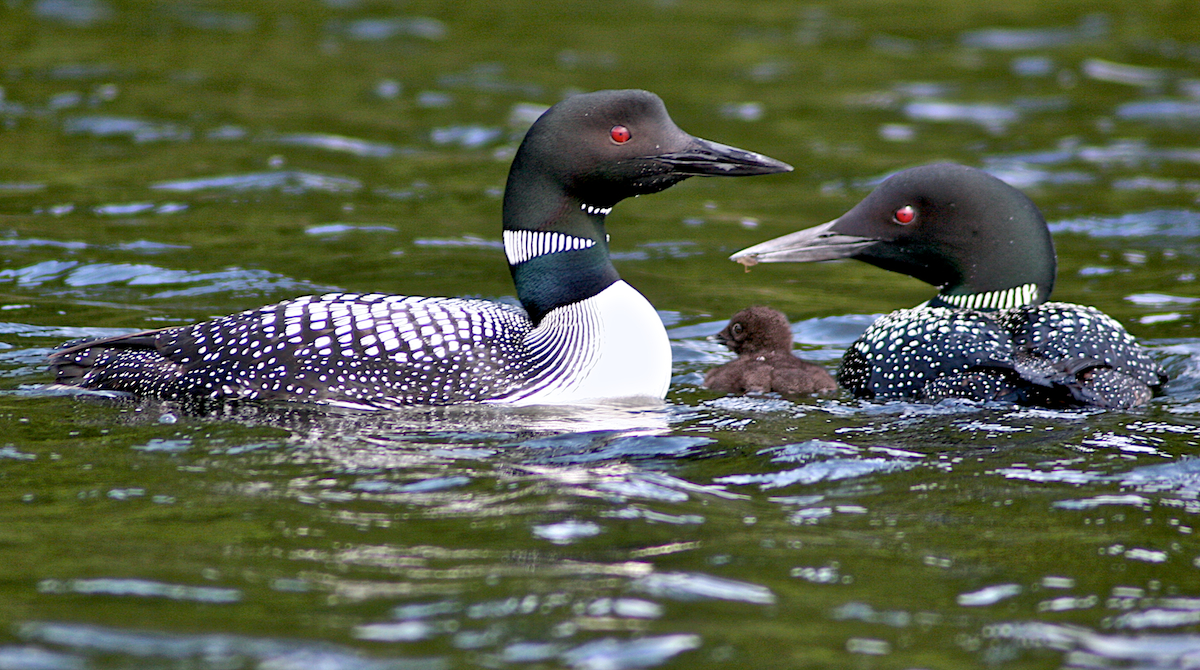Loon Family

Killarney Provincial Park, Central Ontario. The world of loons is revealed only in part on the cold and remote Belle Lake in Killarney Provincial Park in Ontario, but as we paddled in our quiet canoe, we relished in whatever small secret we witnessed of these magnificent and magical water birds of the North Country.
Hatchlings quickly leave their nest and learn to swim with the protected assistance of their parents seen in this image. Often the hatchlings nestle on the back of a swimming parent loon for their own security. Generally, a clutch of six eggs are hatched in the nest, but often only one or two hatchlings survive. Loons are best heard in the early morning or evening echoing their mournful calls to their mates. These “songs” can be heard at great distances; it is a sound that the human will never forget.
*****
The Common Loon (Gavia immer) is the Minnesota State Bird and is also known as The Great Northern Loon. The Common Loons have black heads and necks with white striping and striking red eyes. Their back are mottled with spots and checkering on their backs. As adults, they are three feet in length and weigh about 12 pounds, feeding largely on fish and invertebrates. Loons can dive more than 200 feet below the surface of the water because their bones are solid, not hollow like other birds, adding the needed weight to their bodies allowing them to dive deeper than most other birds to bring up small fish or other morsel to feed.
The predators of the loon are diverse and can strike from all directions. They include other birds such as gulls, ravens, and crows; land mammals such as raccoons, weasels, and skunks; even fish such as pike. Nesting loons incubate their eggs for 27-30 days. After about 11 weeks, hatchlings are able to fly; in the wild, their average lifespan is 30 years. The Native American Inuit have many legends about the loon; they also legally hunt over 4,500 a year for subsistence. Though loon populations are currently stable, a number of threats abound, including pollution and human encroachment.
